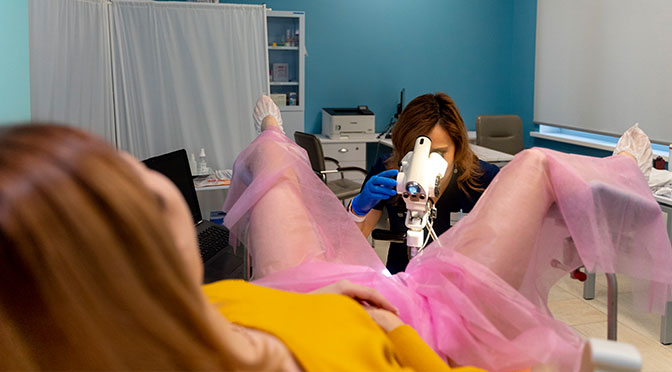The human body has always been a fascinating subject for scientific research and artistic expression. From early experiments in human anatomy to today’s advances in medical imaging, we have explored every nook and cranny of our bodies. One of these innovations in modern medicine is endoscopy, which captures images and video from inside the body. But endoscopy is not limited to medical applications. In this blog post, we will look at the use of endoscopy in art.
William Masters and Virginia E. Johnson are credited with pioneering the use of cameras to study the physiological responses of women during sexual activity. In their first experiments, they instructed subjects to masturbate with a speculum. To extend their study to actual intercourse, they developed a camera-equipped dildo. According to the researchers, they recorded hundreds of complete sexual response cycles and were able to better understand human sexual physiology. These experiments were groundbreaking and opened the doors to a better understanding of human sexual behavior.
Endoscopy has come a long way since then and is now widely used in medical procedures to visualize hard-to-reach areas inside the body. Endoscopes are used in fields such as gastroenterology, pulmonology, and urology. Gastroenterologists use an endoscope to examine the digestive tract, while pulmonologists use it to examine the lungs. Urologists use endoscopes to examine the urinary tract. In all of these cases, the endoscope is an important tool for diagnosis and treatment.
But some people have taken endoscopy to the next level and used it as a medium for artistic expression. Monika Funke Stern, a German filmmaker, made a short film called “Parfait d’Amour” in which she used an endoscope to capture intimate images of the human body. The movie shows close-ups of body parts, including the mouth and vagina. The use of an endoscope allowed for a unique perspective, a look inside the body that is not possible by other means.
For erotica writers, the use of endoscopy is a special challenge. How do you describe the intimate, erotic and often taboo moments with a language that is sensual, poetic and stimulating? The use of endoscopic images can open a new perspective on the human body and reveal new ways of exploring intimacy, sexual behavior and human experience.
In his 2002 film “Hable con ella” (“Talk to her“), Spanish filmmaker Pedro Almodóvar made a first, clumsy attempt in this direction. In a dream sequence, he describes how a man the size of a finger first undresses his sleeping girlfriend, then descends to her vagina, opens her labia and enters her. All of this still looks very artificial, but it is a step in the direction that Monika Funke-Stern had already taken in 1988. Artistic creativity will always begin where new technical possibilities open up and things that were originally unrelated are combined.
Endoscopy has come a long way since the early pioneering work of William Masters and Virginia E. Johnson. Today, it is an indispensable tool in medical diagnosis and treatment, providing insight into parts of the body that would otherwise be difficult to access. However, the use of endoscopy in the field of art is a relatively recent development and is exciting for those who wish to explore the human body in new and creative ways. Furthermore, the use of endoscopic imagery in erotic writing offers a new perspective on intimacy and sexuality, inviting writers to explore the human experience in ways that would not otherwise be possible.

